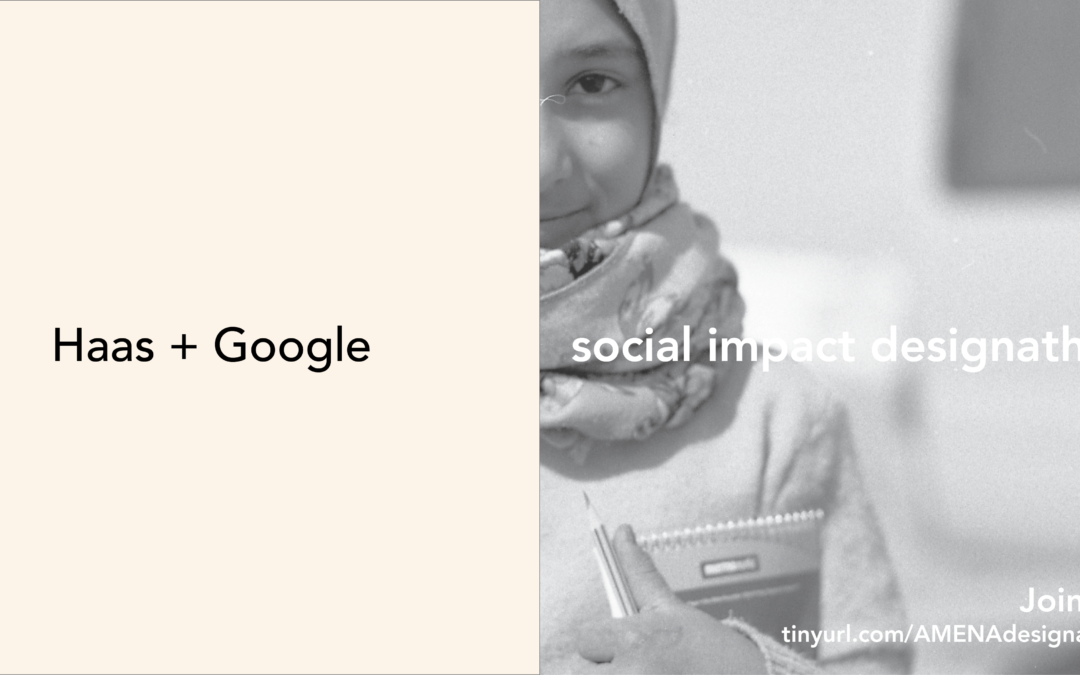
Blog: Amal Designathon

Amal Designathon 2018: Making Technological Innovation Accessible



The Amal Designathon took place on the weekend of September 22nd-23rd, in the Haas Innovation Lab inside of Memorial Stadium. Teams of UC Berkeley students worked tirelessly to create a interface for Amal, competing for the chance to work directly with founders, Negah Nafisi and Soha Eshraghi, to fully develop their interface and potentially present it to the World Bank. Within two weeks the AMENA Center and Amal were able to secure over 70 participants, comprised of UC Berkeley undergraduate and graduate students with various educational backgrounds. The common denominator among the participants was an interest in social impact and design, however, the Designathon was not limited in the scope of the majors and interests allowed for participants. Additionally, the AMENA center enlisted the help 30 industry professionals to guide the Designathon participants and serve as mentors as they worked in teams to develop an interface for Amal. Most mentors were industry leaders involved in UI/UX at companies like Google and Lime. Mentors were assigned to teams and provided a guiding hand, allowing the teams to develop designs that Amal would be able to implement into its interface.


Teams were able to make use of the resources available in the Haas Innovation Lab, and worked late into Saturday evening, only taking breaks to eat and attend a series of lightning talks given by Google’s John Angelo and Tara Hirebet.
John Angelo gave a compelling talk on how to successfully develop and gain support for your design. His experience leading system level interaction design efforts on Wear OS, and as the lead designer on the news and search team at Facebook gave him a wealth of experience that he was able to share with an eager audience of Berkeley students looking to gain insights into the design industry.

Later in the afternoon, Tara Hirebet, Senior UX Researcher on Google’s Next Billion Users (NBU) team, gave a talk on Designing for global Accessibility. Tara’s talk gave Designathon participants some important insights into the online tendencies of Amal’s target user base. Placing teams in the Designathon cited Tara’s talk as a source of inspiration for their designs.
By Saturday evening most teams had exhausted all their energy for the day, and were ready for the final push Sunday morning. On Sunday, teams were able to put the finishing touches on their designs, and finished preparation for final presentations. For the entirety of Sunday afternoon, each of the 13 teams presented their design to a group of judges which included Negah Nafisi, Chad Ackerman, and Shipra Kayan.
Every team was able to produce an impressive design, and judges had difficulty ranking the teams because there was such strong competition. However, by the end of deliberations the judges were able to select four teams to place.

In third place, was: team two, with members Zaki Alattar and Chase Walz.
In second place was team four, which was comprised of a group of graduate students at UC Berkeley’s School of Information: Paul Stott, Mu-ti Huang, Meena Kaushik, Olivia Seow, and Yuval Barash.
In first place, was team 11, a group of UC Berkeley students who had not met each other prior to the Designathon. Remarkably team 11 was able to develop enough chemistry to produce a compelling design which the judges rated the most effective:
Brandon Fang, Catherine Tran, Corey Hu, Franchesca Spektor, Parina Gujral.
The first and second place teams will have the opportunity to continue to develop their interface for Amal and will also receive a tour of Facebook or Lime with their design team. Additionally, each placing team will have the opportunity to dine with their respective mentors and continue to maintain their relationship with industry experts.
The AMENA Center was more than happy to host this year’s successful Amal Designathon which exceeded all expectations. The work accomplished this past weekend will go a long way to bridge the technological and innovation gap that persists in the MENA region.
The AMENA Center looks forward to hosting more events like the Amal Designathon and will continue its important work in fueling entrepreneurial innovation in the Middle East.
Recent Comments